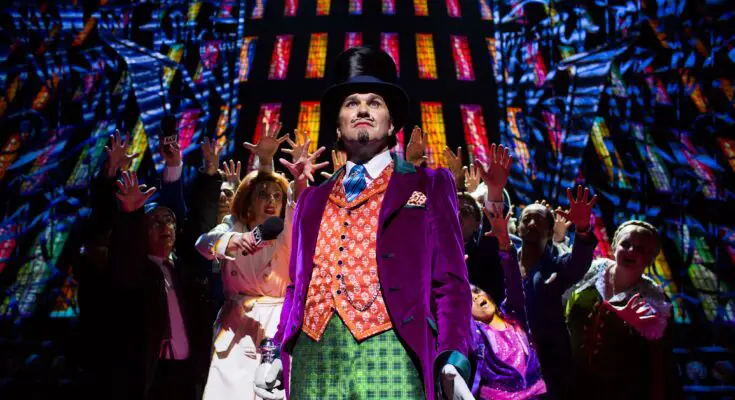Roald Dahl’s Charlie and the Chocolate Factory is one of the most iconic and enduring tales in literature and film. Its whimsical story, unforgettable characters, and imaginative world have captured the hearts of audiences for decades. Adapted into multiple films, plays, and musicals, the story’s vibrant universe continues to inspire fans, artists, and creators worldwide.
This article explores the timeless appeal of Charlie and the Chocolate Factory and its cultural impact, from its themes of morality and creativity to its influence on pop culture, including fashion and The Enduring Legacy of Charlie and the Chocolate Factory costumes that bring its eccentric characters to life.
1. A Tale of Morality and Imagination
At its core, Charlie and the Chocolate Factory is a morality tale wrapped in a whimsical narrative. Each of the children who visit Willy Wonka’s factory represents a particular vice, from greed to gluttony, and their fates serve as cautionary lessons. In contrast, Charlie Bucket’s humility, kindness, and integrity make him a worthy heir to Wonka’s magical chocolate empire.
This moral underpinning resonates with audiences across generations, reminding readers and viewers of the value of virtues like honesty and empathy. The fantastical elements—edible landscapes, Oompa-Loompas, and mind-bending inventions—offer a feast for the imagination, making the story equally appealing to children and adults.
2. Memorable Characters That Transcend Time
One of the reasons Charlie and the Chocolate Factory endures is its cast of unforgettable characters. Willy Wonka, with his enigmatic personality and eccentric style, is a cultural icon. Portrayed by actors such as Gene Wilder and Johnny Depp in film adaptations, Wonka’s blend of whimsy and mystery has left an indelible mark on pop culture.
The children and their unique flaws—Augustus Gloop’s insatiable appetite, Veruca Salt’s spoiled nature, and Violet Beauregarde’s competitive streak—serve as reflections of societal traits, making them both relatable and timeless.
These characters are brought to life through vibrant costume designs that emphasize their personalities. The striking outfits of Willy Wonka, from his purple velvet coat to his top hat, have become symbols of the character’s quirky brilliance, inspiring cosplay and creative interpretations over the years.
3. Cultural Influence and Adaptations
Since its publication in 1964, Charlie and the Chocolate Factory has inspired a plethora of adaptations, each adding its unique flavor to the story. The 1971 film Willy Wonka & the Chocolate Factory introduced a musical dimension, with songs like “Pure Imagination” becoming classics. The 2005 adaptation by Tim Burton offered a darker, more stylized take, appealing to modern audiences.
The story has also been adapted into stage musicals and even an opera, each bringing new interpretations of Dahl’s vision. These adaptations have kept the tale fresh and relevant, introducing it to new generations and ensuring its place in cultural history.
4. Fashion and Cosplay: A Lasting Legacy
The whimsical world of Charlie and the Chocolate Factory has had a profound influence on fashion and cosplay. Fans around the globe channel their favorite characters through creative interpretations of their iconic looks. The cosplay costumes inspired by Willy Wonka, the Oompa-Loompas, and even Veruca Salt allow fans to immerse themselves in Dahl’s fantastical universe.
The enduring popularity of the story’s costumes extends beyond cosplay. Fashion designers and artists often draw inspiration from the vibrant and imaginative aesthetics of the factory, incorporating elements of surrealism and playfulness into their work.
5. Themes That Stand the Test of Time
The themes explored in Charlie and the Chocolate Factory—kindness, imagination, and the consequences of selfishness—remain as relevant today as they were when the book was first published. These universal messages resonate with audiences in an increasingly complex world, offering a sense of wonder and hope.
Moreover, the story’s focus on creativity and individuality aligns with modern values, making it a source of inspiration for those who seek to celebrate uniqueness in all its forms.
6. The Future of Charlie and the Chocolate Factory
The legacy of Charlie and the Chocolate Factory shows no signs of waning. With rumors of new adaptations and the enduring popularity of themed events and merchandise, the story continues to capture the imaginations of fans worldwide.
Its vibrant characters, moral lessons, and fantastical setting ensure that it remains a cornerstone of popular culture. As fans don costumes inspired by the story and step into the world of Willy Wonka, they keep the magic alive for future generations.
Conclusion: A Timeless Tale of Wonder
Charlie and the Chocolate Factory is more than just a story; it’s a cultural phenomenon that celebrates creativity, individuality, and morality. Its lasting appeal lies in its ability to transport audiences to a world of pure imagination while imparting meaningful lessons.
The rich visual language of the tale, including The Enduring Legacy of Charlie and the Chocolate Factory costumes, ensures its place in fashion, cosplay, and creative expression. Whether through adaptations, fashion, or fan art, the magic of Willy Wonka’s factory continues to inspire and delight, proving that the legacy of Charlie and the Chocolate Factory is as sweet and enduring as chocolate itself.



